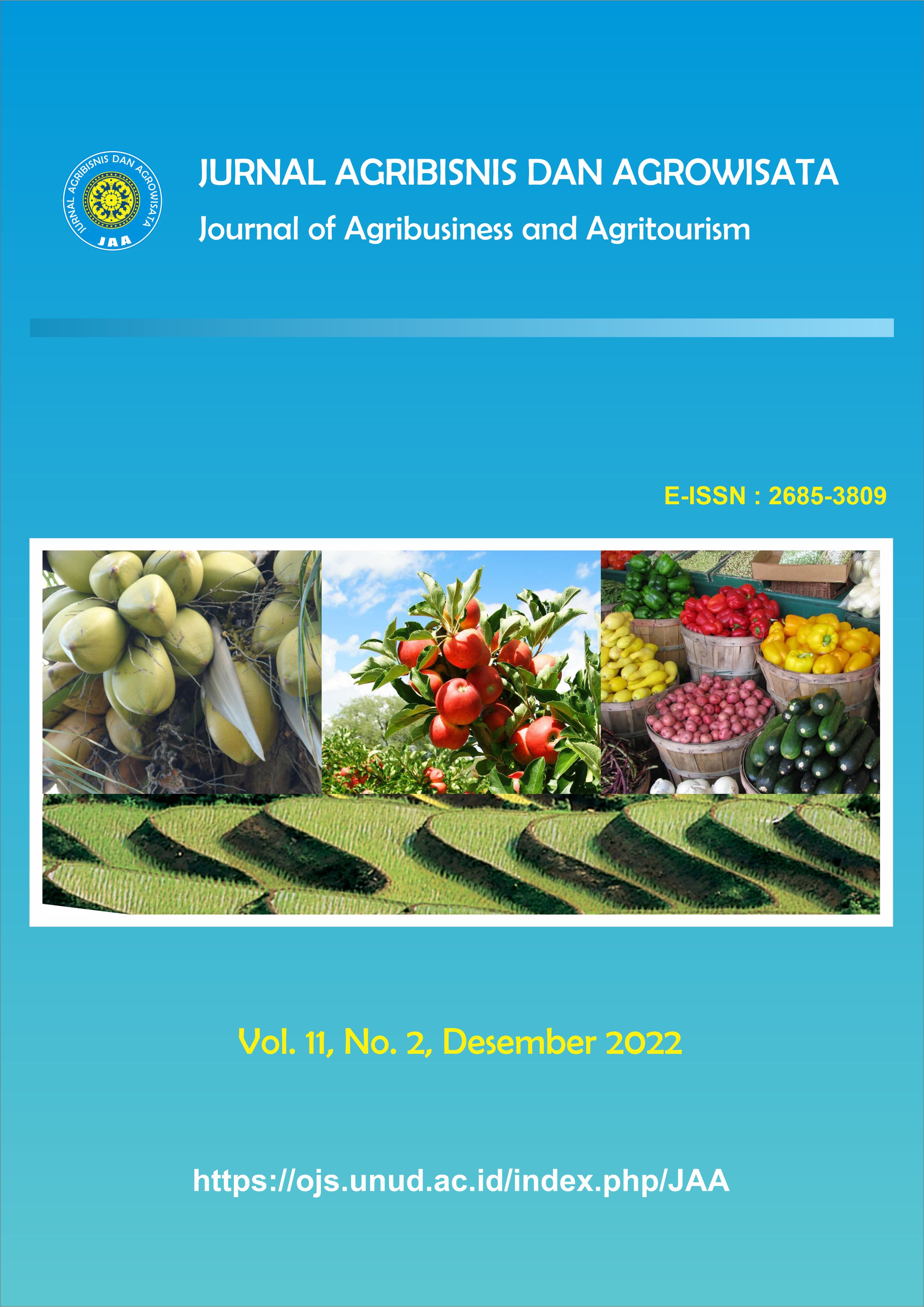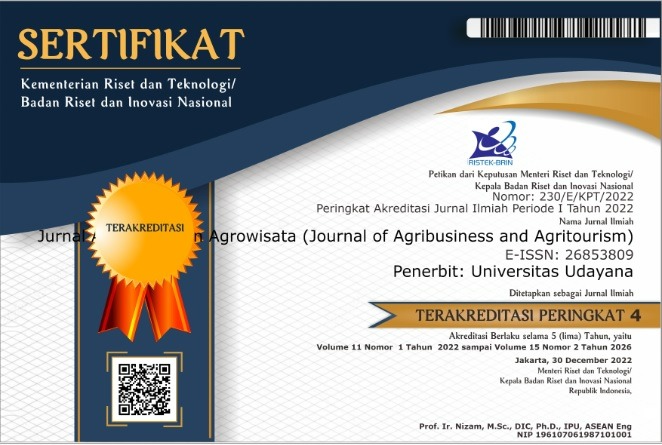Analisis Nilai Tambah Kopi Arabika Menjadi Kopi Bening (Studi Kasus 210 Roastery Jakarta Selatan)
Abstract
Analiysis Of The Added Value Of Turning Arabika Coffee Into Clear Coffee (Case Study 210 Roastery South Jakarta)
Arabica coffee in Indonesia have a distinctive aroma and taste. Clear coffee management is focused on increasing the added value of processed Arabica coffee products into clear coffee. The purpose of this study was to determine the amount of added value obtained by 210 Roastery from clear coffee driks and to know the amount of profit or profit generated from processing Arabica coffee into clear coffee at 210 Roastery, as well as quantitative data using the Hayami method.Research result the input is in from of 20 kg Arabica coffee powder per process and an output of 10.000 botteles per process. In calculating the added valaue per process using the Hayami method, the clear coffee production kilogram gets an added value of Rp 700.140,00/ kg with a level medium value added rasio of 36. 87%. The profit from the production process using the Hayami method is Rp 665.140,00/kg with a profit rate of 40.96% per kg, and an enterpreneur’s profit of 40.96% per kg. The profit of clear coffee productions for one process is Rp 462.022.798,00 per process. The gross profit from the clear coffee production process for one month is Rp 965.990.000,00 and the net profit obtained from the clear coffee production process for one mounth is Rp 537.223.677,00.
Downloads
References
Bahri, S. 1996. Bercocok Tanam Tanaman Perkebunan Tahunan. UGM Press.
Baridwan, Z. 2004. Intermediate Accounting. Edisi Kedelapan. Yogyakarta : BPFE.
Hayami,Y.et al. 1987. Agricultural marketing and processing in upland Java. A perspective from a Sunda village. Bogor: CGPRT Centre.
Hubies,M. 1997. Menuju Industri Kecil Profesional di Era Globalisasi Melalui Pemberdayaan Manajemen Industri. Orasi Ilmiah. Fakultas Teknologi Pertanian Institut Pertanian Bogor.
Kasmir. 2016. Pengantar Manajemen Keuangan Edisi Kedua. Available online at : https://www.google.co.id/books/edition/Pengantar_Manajemen_Keuangan/lW9ADwAAQBAJ?hl=en&gbpv=1&dq=kasmir+2016&printsec=frontcover. (Diakses 12 September, 2020).
Riduwan. 2004. Metode Riset. Rineka Cipta, Jakarta.
Soekartawi. 2009. Agribisnis. Teori dan Aplikasi. Univesitas Brawijaya Malang dan Dapertemen Pendidikan Nasional, Jakarta.
Statistik Perkebunan Indonesia. 2020. Statistik Perkebunan Kopi Indonesia Periode 2017 sampai 2019. Available online at : https://drive.google.com/file/d/1S8UHnTgSVwKgqEJB5WXFSp6903sRiiWH/view. (Diakses 12 September, 2020).
Sundiyono, A. 2004. Pemasaran Pertanian. UMM Press, Malang.







